The first Estes Porta-Pot Shot I built was a disappointment on many levels. It has incredibly fragile clear plastic fins, yet came with a microscopic parachute seemingly designed to ensure fin breakage. And they provide an 18mm motor mount and suggest motors as wimpy as a B4-2. The largest Estes motor that will fit that mount, the C6, is barely adequate to overcome the drag of the boxy shape.
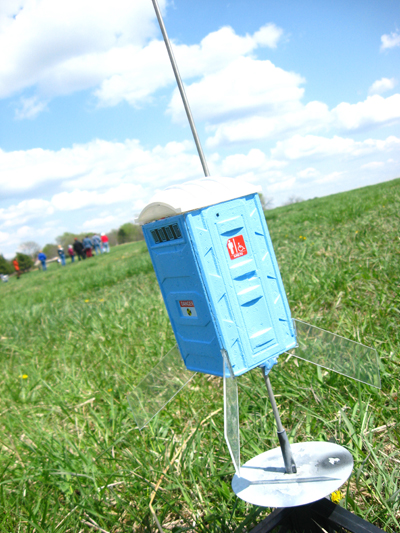
The result was we got very few flights before the cumulative damage of hard landings and lawn darts took the rocket out of circulation.
My main improvements this time were to treat the center tube as the motor mount, allowing 24mm C11, D12 and E9 motors. Then I hollowed out more of the interior to make sure a full sized parachute (in this case, a 15" rip-stop nylon chute) would deploy freely. The parachute wouldn't be in the motor tube (no room above an E9 motor for that), but the nose cone roof ought to be able to drag it out of the side pocket upon ejection. And if not, I reasoned, the roof should fall faster than the body, and that ought to finish pulling the laundry out pretty quickly.
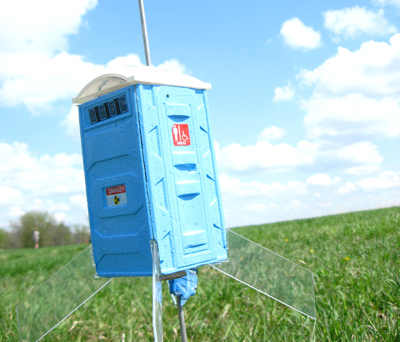
I had epoxied an ounce of lead shot into the nose to ensure stability. With the heavier motors, I figured the center of pressure could ended up forward of the center of gravity otherwise. This would lead to unstable flight, which would be an ugly scene. I wasn't sure how to get Rock-Sim to calculate such a bizarre shape, and being a cube, it's a tricky model to swing test, so I was guessing a little.
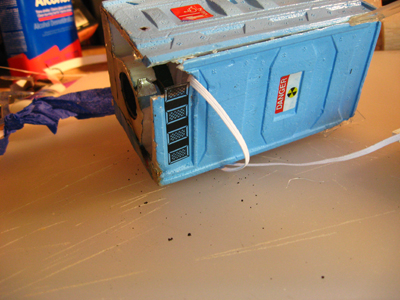
I'm glad I added the nose weight: the rocket corkscrewed a bit going up, which tells me it was flirting with instability in all likelihood. Could have been a canted fin, but I doubt it the way these fins mounted. The other possibility is that the higher airspeed got the fins flapping slightly.
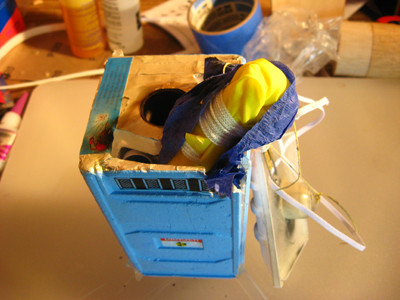
But as you can see from the video, the parachute didn't quite get free of the hole. With catastrophic results. I may look at repairing this ship, but it's got a busted fin, a breach of the wall where I hollowed things out, and it's not quite square anymore.

On the bright side, Mr. Creosote's re-debut was a resounding success. We flew him twice on D12-7's (on the video, you'll hear me call it a D12-3 on the first launch, but it was a seven second delay). I put a smallish parachute on him, a 12" (his predecessor flew with a 24" monster), but he's stout enough to handle a bit rougher landing. 1/8" basswood fins instead of balsa; the fins are through the wall, epoxied to the motor tube, with good epoxy fillets at the body tube. Since he gets much higher than his C-powered Papa, this is good for reducing the chance's he'll drift into the great beyond.
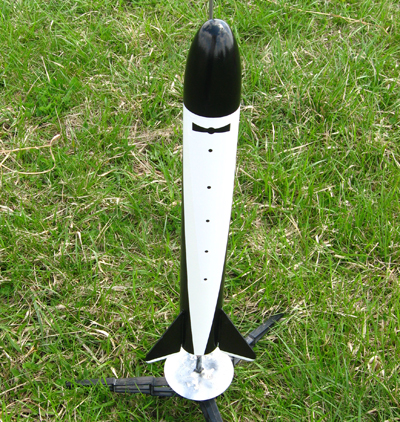
We went to launch Thor's Candycane. The wind had picked up, and he's a good one for windy days because he doesn't get very high and does come down fast, even on a 24" chute.
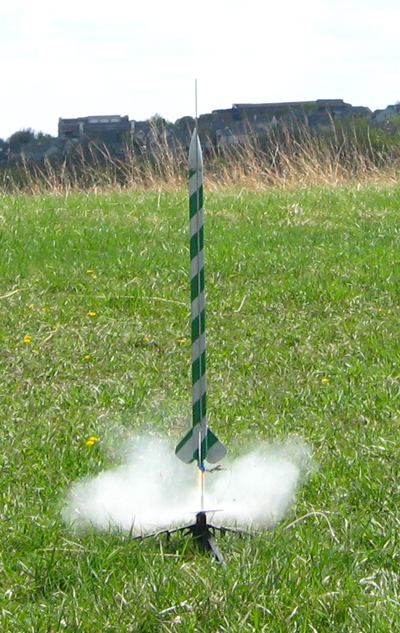
Right after I got this nice shot of him at ignition, a gust of wind blew the rocket and launch rod over and he did a worm burner across the grass for about 20 yards. I wish I'd gotten video of that: it's something I wouldn't want to repeat, but it was funny.

Em surprised me by coming out of her pseudo-teen-angst and actually participating in this outing. She even took an interest in prepping the rockets, packing chutes and loading motors. And this is something she has never done before.
She went on to further surprise me by asking questions that showed genuine curiosity about things she usually willfully ignores. Kind of like when Mo has a breakthrough moment of verbal communication, it was a thrilling instant of connection around the hormones and the obvious geek factor of a Dad who's into model rockets.


No comments:
Post a Comment